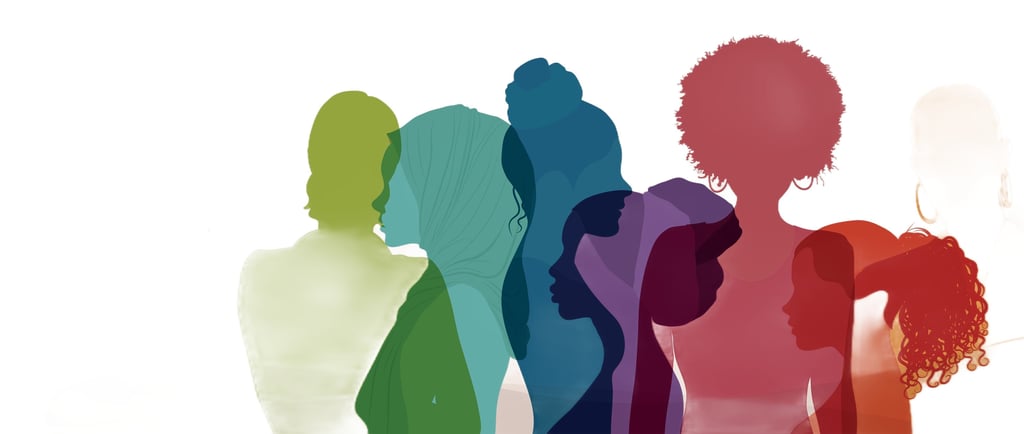Coping with Hot Flashes
A Comprehensive Guide to managing your own personal Heat Wave!


So, let me set the stage. I’m in a meeting with no less than 15 people sitting around a giant conference table; my turn to brief is approaching. I am briefing my boss and the senior staff; he happens to be a 3-Star General, and, by the way, I am the ONLY female in the room. I start feeling warm, but warm is an understatement; it’s like my blood is starting to boil; I immediately think that the thermostat has gone wild, but no one else is reacting or sweating. Then my heart starts to race. Am I having a heart attack? Well, my arm is not tingling or going numb, so maybe it's not a heart attack. I can feel the heat rising up my neck and the beads of sweat forming on my scalp and forehead and starting to roll down my back. Can I get up and leave? Nope, not possible. It’s just about my turn to brief. After about 5 excruciating minutes, I start to feel myself cooling down. I am simply grateful that the overheating seems to be stopping. I figured out later, with the help of Google, that was my first ‘hot flash,’ my first of many.
This, or a similar story, is how many of us realize that perimenopause is upon us. I had no idea what perimenopause was. I vaguely remember my mother referring to ‘hot flashes,’ so I thought, “ ok, this is it, menopause. After some googling, I figured out it was not menopause but perimenopause.
Hot flashes, also known as vasomotor symptoms, are common during perimenopause and menopause, affecting approximately 75% of women. These sudden, intense waves of heat, often accompanied by sweating and a flushed face, can be disruptive to daily life. Waves of heat feel like a false description. I describe it as starring in your own horror movie where your blood starts to boil.
There are several effective strategies and lifestyle changes that can help alleviate the discomfort caused by hot flashes. In this blog post, we will explore various methods, both natural and medical, to help you better cope with hot flashes and improve your overall quality of life during this transitional phase.
Hot flashes occur due to hormonal changes during menopause, specifically the decline in estrogen levels. They can vary in frequency, intensity, and duration, lasting from a few seconds to several minutes. While the exact causes of hot flashes are not fully understood, triggers such as stress, caffeine, alcohol, spicy foods, and tight clothing have been identified. It is crucial to identify these triggers to effectively manage hot flashes. So stop drinking...nope just kidding...that is a bridge too far for many of us.
Making certain lifestyle modifications can significantly reduce the frequency and severity of hot flashes. Firstly, maintaining a healthy weight through regular exercise and a balanced diet can help regulate hormone levels and reduce hot flashes. Regular physical activity, such as yoga, tai chi, or aerobic exercises, has been found to be particularly beneficial. I found that consistent exercise has helped to regulate my symptoms over all, not just teh hot flashes.
Additionally, avoiding triggers like caffeine, alcohol, and spicy foods can help minimize hot flashes. Wearing loose, breathable clothing made of natural fibers such as cotton or linen can aid in body temperature regulation. Keeping a fan or portable cooling device nearby can offer instant relief during a hot flash.
Stress management techniques, such as deep breathing exercises, meditation, and yoga, can help reduce the intensity and frequency of hot flashes. Engaging in activities that promote relaxation, such as taking warm baths infused with essential oils or listening to calming music, can also be effective.
Various natural remedies have been found to alleviate hot flashes. These include herbal supplements like black cohosh, evening primrose oil, and red clover, which have mild estrogen-like effects. However, it is important to consult with a healthcare professional before starting any herbal supplements, as they may interact with other medications or have side effects.
Incorporating phytoestrogen-rich foods into your diet, such as soy products, flaxseed, and legumes, may help ease hot flashes. These plant-based compounds mimic the action of estrogen in the body and can provide relief.
For severe or persistent hot flashes that significantly impact daily life, medical interventions can be considered. Hormone therapy (HT), which involves estrogen and progesterone supplementation, is the most effective treatment for hot flashes. However, it is not suitable for everyone, and risks and benefits should be discussed with a healthcare provider.
Non-hormonal medications, such as selective serotonin reuptake inhibitors (SSRIs), have been shown to reduce hot flashes. These medications, commonly used for depression and anxiety, can be prescribed off-label for their benefits in managing menopausal symptoms.
Alternative therapies, including acupuncture and cognitive-behavioral therapy (CBT), have also been shown to provide relief from hot flashes. Acupuncture involves the insertion of fine needles into specific points of the body to stimulate energy flow, while CBT focuses on changing thought patterns and behaviors to improve symptoms.
Hot flashes are a common menopausal symptom that can significantly impact a woman's quality of life. However, by implementing lifestyle modifications, incorporating natural remedies, and considering medical interventions when necessary. This too shall pass. The intensity and frequency will diminish. Try to be mindful of the triggers and track what has happened in your day prior to experincing a hot flash. It can help you identify your triggers and curb them. Hang in there! Worst case jusmp in a pool!
